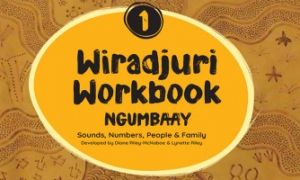

Big changes are on the horizon for ECEC services under the NQF, with new child safety reforms rolling out in two phases from 01 September 2025 and 01 January 2026.
ACECQA has developed National Quality Framework (NQF) professional development eLearning modules. The program consists of a series of four elearning modules, each of which cover a different aspect of the NQF which include: Introduction to the children's education and care sector, Overview of the NQF, Law and Regulations, National Quality Standards, Approved learning frameworks V2.0.
Writing critical reflections for the National Quality Standards (NQS) in early childhood education involves a thoughtful and systematic approach to evaluating and improving your teaching practices. The following articlr provides information on Steps to Write Critical Reflections For The NQS, Critical Reflection Examples for Quality Area 1 To Quality Area 7 and more.
The Education and Care Services National Law and National Regulations prescribe requirements for children participating in nature programs to ensure the safety and well-being of children. The following article provides an overview of the regulatory requirements for services offering in nature programs.
The Early Years Learning Framework recognizes the inextricable links that belonging, being and becoming have with learning. As part of this recognition, the framework elaborates learning outcomes, principles and practices for educators that will help them meet their professional goals while ensuring personal growth and well-being too. The following article provides definitions of belonging, being and becoming.
New National Quality Framework (NQF) professional development eLearning modules are now available from ACECQA. The online modules progressed as one of the short-term actions in the Shaping our Future: Implementation and Evaluation Plan. The program consists of a series of four eLearning modules which each cover a different aspect of the NQF.
The Victoria's Child Safe Standards Posters are a set of mandatory requirements to protect children and young people from harm and abuse. The new 11 Child Safe Standards came into force in Victoria on 1 July 2022.
The NSW Child Safe Standards Posters display each of the 10 standards as well as details on why each standard is important and how this standard can be applied in the service. The Child Safe Standards establish a standard so that organisations can evaluate their ability to keep children safe and set performance goals. The Standards offer organisations practical advice on how to promote a child-friendly culture, adopt policies, and take actions that prioritise children's best interests and keep them safe from harm.
The aim of Quality Area 1 is to ensure that the educational programs and practices of educators are child-centred, stimulating and maximise opportunities for enhancing and extending each child’s learning and development. In the school-age care context, the aim of this Quality Area is to see that the program nurtures the development of life skills and complements children’s experiences, opportunities and relationships at school, at home and in the community. The following article provides FDC Compliance Responsibilities Of QA1, Documentation Of Assessment, How Compliance Is Monitored, Consequences For Non-Compliance and more.
After the 2019 NQF review, some changes to the Education and Care Services National Law and National Regulations, have been agreed upon by Commonwealth, state, and territory education ministers for the betterment of children’s health, well-being, and security.
 Here is the list of the EYLF Learning Outcomes that you can use as a guide or reference for your documentation and planning. The EYLF… Read More
Here is the list of the EYLF Learning Outcomes that you can use as a guide or reference for your documentation and planning. The EYLF… Read More
 The EYLF is a guide which consists of Principles, Practices and 5 main Learning Outcomes along with each of their sub outcomes, based on identity,… Read More
The EYLF is a guide which consists of Principles, Practices and 5 main Learning Outcomes along with each of their sub outcomes, based on identity,… Read More
 This is a guide on How to Write a Learning Story. It provides information on What Is A Learning Story, Writing A Learning Story, Sample… Read More
This is a guide on How to Write a Learning Story. It provides information on What Is A Learning Story, Writing A Learning Story, Sample… Read More
 One of the most important types of documentation methods that educators needs to be familiar with are “observations”. Observations are crucial for all early childhood… Read More
One of the most important types of documentation methods that educators needs to be familiar with are “observations”. Observations are crucial for all early childhood… Read More
 To support children achieve learning outcomes from the EYLF Framework, the following list gives educators examples of how to promote children's learning in each individual… Read More
To support children achieve learning outcomes from the EYLF Framework, the following list gives educators examples of how to promote children's learning in each individual… Read More
 Reflective practice is learning from everyday situations and issues and concerns that arise which form part of our daily routine while working in an early… Read More
Reflective practice is learning from everyday situations and issues and concerns that arise which form part of our daily routine while working in an early… Read More
 Within Australia, Programming and Planning is reflected and supported by the Early Years Learning Framework. Educators within early childhood settings, use the EYLF to guide… Read More
Within Australia, Programming and Planning is reflected and supported by the Early Years Learning Framework. Educators within early childhood settings, use the EYLF to guide… Read More
 When observing children, it's important that we use a range of different observation methods from running records, learning stories to photographs and work samples. Using… Read More
When observing children, it's important that we use a range of different observation methods from running records, learning stories to photographs and work samples. Using… Read More
 This is a guide for educators on what to observe under each sub learning outcome from the EYLF Framework, when a child is engaged in… Read More
This is a guide for educators on what to observe under each sub learning outcome from the EYLF Framework, when a child is engaged in… Read More
 The Early Years Learning Framework describes the curriculum as “all the interactions, experiences, activities, routines and events, planned and unplanned, that occur in an environment… Read More
The Early Years Learning Framework describes the curriculum as “all the interactions, experiences, activities, routines and events, planned and unplanned, that occur in an environment… Read More

The following free workbooks are designed to allow the best opportunities to learn the Wiradjuri...
See more...
March 17th, is St Patrick's Day. St. Patrick's Day observes the death of St. Patrick, the patron...
See more...
Linking educational theories to developmental milestones can provide a more comprehensive understanding of children's growth...
See more...© 2009-2025 Aussie Childcare Network Pty Ltd. All Rights Reserved.

